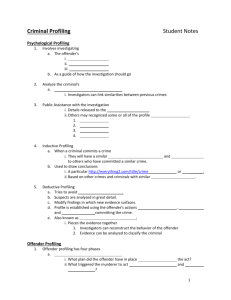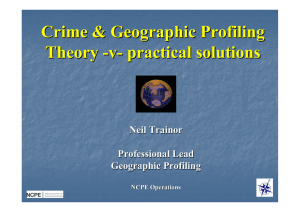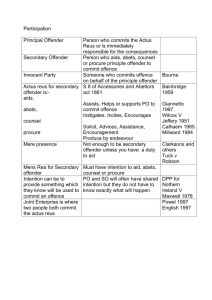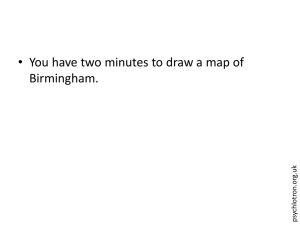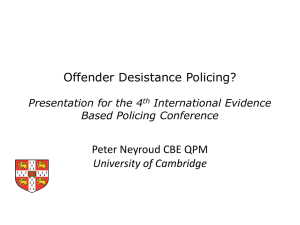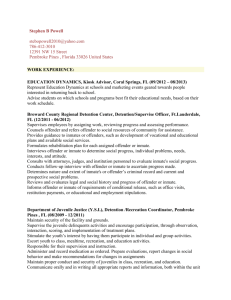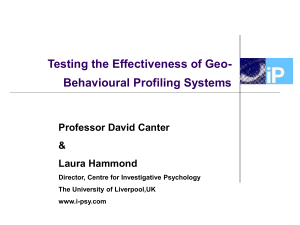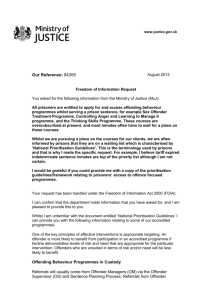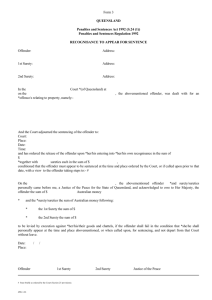Rossmo`s formula
advertisement
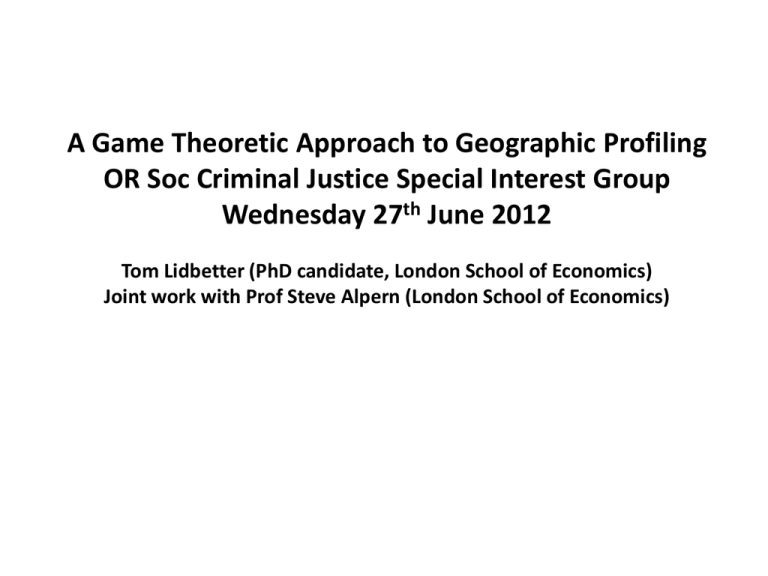
A Game Theoretic Approach to Geographic Profiling OR Soc Criminal Justice Special Interest Group Wednesday 27th June 2012 Tom Lidbetter (PhD candidate, London School of Economics) Joint work with Prof Steve Alpern (London School of Economics) The problem A series of crimes (eg. murders) have been committed in a town or city. Based on the locations of the crimes, where is the offender likely to be located? × × ?× × × Rossmo’s formula In his PhD thesis (written in 1987), criminologist, Kim Rossmo suggested a formula for calculating the probability the offender is located in each ‘sector’ (grid square) of the city. This marked the beginning of geographic profiling. Where What the formula does The formula assumes there is a ‘buffer zone’ around the offender’s location. Within the buffer zone, the probability of crimes increases with distance. Outside the buffer zone, the probability of crimes decreases with distance. decreasing probability increasing probability Then, given a set of observed crime locations, a boundary is created around those locations, and every square in the boundary is rated according to how well it explains the observations. × × × × × Computer software Rossmo’s formula is implemented in the software package, RIGEL. Rigel has been used by: • • • • Royal Canadian Mounted Police (1997) National Crime and Operations Faculty, UK (1999) Bureau of Alcohol, Tobacco and Firearms, US (2000) Bundeskriminalamt, Germany (2000) Other geographic profiling software packages include DRAGNET and Crimestat. How to beat Rossmo’s formula × × × × × Commit all your crimes in a cluster somewhere away from your location. A very simple game theory model • 2 players – offender and police • Played in 1 dimension (on a line) • Offender, based at 0 chooses two locations not more than distance 𝑛 away from him. I.e. he chooses two numbers between – 𝑛 and 𝑛. × −5 − 4 × −3 −2 −1 0 1 2 3 4 5 • Police see only the crime locations, and try to guess the location of the offender. × × • The police win if they correctly guess the location of the offender, otherwise the offender wins. Solution The offender should pick the two locations together in a randomly chosen place. This gives the least possible information to the police. × × -5 -4 -3 -2 -1 0 1 2 3 4 5 The police should then pick randomly from all the possible locations of the offender. ×× This is clearly unrealistic. Towards improving the model We need some more assumptions: • Include a buffer zone around the offender as in Rossmo’s model? -5 -4 -3 -2 -1 0 1 2 3 4 5 • Create a buffer zone around each crime, so two crimes are not committed too close together? × -5 -4 × -3 • Any other suggestions? -2 -1 0 1 2 3 4 5
